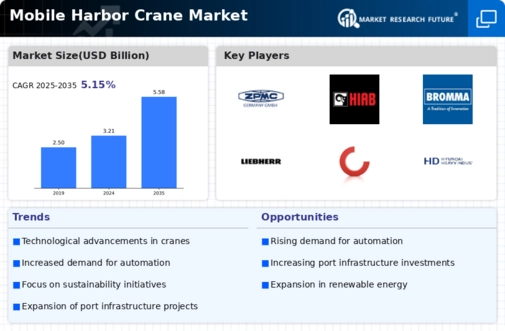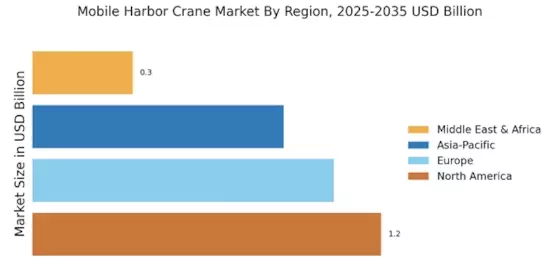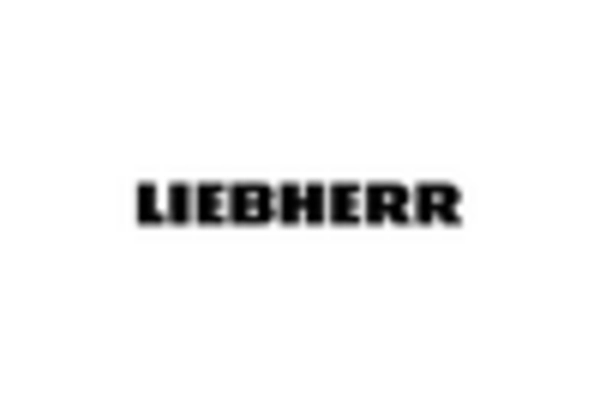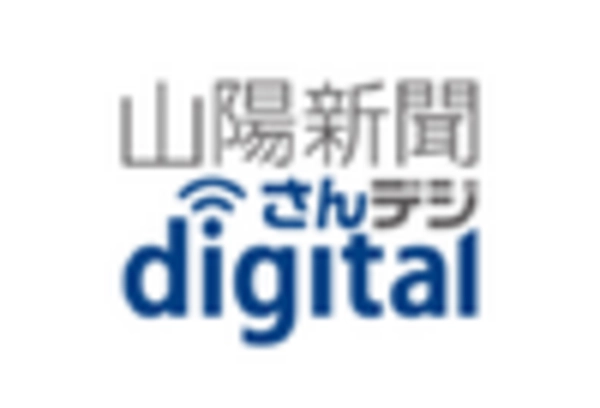Growing Global Trade
The Mobile Harbor Crane Market is poised for growth due to the increasing volume of global trade. As international shipping continues to expand, the demand for efficient cargo handling solutions rises correspondingly. Ports are investing in advanced crane systems to accommodate larger vessels and higher throughput requirements. Recent statistics indicate that container traffic is expected to grow by 4% annually, necessitating the deployment of more sophisticated cranes. This trend underscores the critical role of mobile harbor cranes in enhancing port efficiency and meeting the demands of a dynamic trade environment. Consequently, the Mobile Harbor Crane Market is likely to see substantial investments aimed at upgrading existing infrastructure.
Sustainability Initiatives
Sustainability initiatives are becoming a cornerstone of the Mobile Harbor Crane Market as companies strive to reduce their carbon footprint. The increasing emphasis on eco-friendly operations has led to the development of electric and hybrid cranes, which offer lower emissions compared to traditional diesel-powered models. Furthermore, regulatory frameworks are evolving, pushing for greener practices in port operations. Data suggests that the market for electric cranes is expected to grow by 20% over the next five years, reflecting a significant shift towards sustainable solutions. This trend not only aligns with The Mobile Harbor Crane Industry.
Technological Advancements
The Mobile Harbor Crane Market is experiencing a surge in technological advancements that enhance operational efficiency and safety. Innovations such as automation, remote control systems, and advanced sensor technologies are becoming increasingly prevalent. These developments not only streamline operations but also reduce labor costs and minimize human error. For instance, the integration of IoT devices allows for real-time monitoring and predictive maintenance, which can significantly extend the lifespan of cranes. According to recent data, the adoption of automated cranes is projected to increase by 15% annually, indicating a strong trend towards modernization in the Mobile Harbor Crane Market. This shift towards high-tech solutions is likely to attract investments and drive growth in the sector.
Port Infrastructure Development
The ongoing development of port infrastructure is a significant driver for the Mobile Harbor Crane Market. Many regions are investing heavily in modernizing their port facilities to handle increasing cargo volumes and improve operational efficiency. This includes the construction of new terminals and the expansion of existing ones, which often necessitates the acquisition of advanced mobile harbor cranes. Data indicates that investment in port infrastructure is projected to reach USD 100 billion over the next decade, highlighting the potential for growth in the Mobile Harbor Crane Market. As ports enhance their capabilities, the demand for innovative crane solutions is expected to rise, further propelling market expansion.
Increased Demand for Efficient Logistics
The Mobile Harbor Crane Market is significantly influenced by the rising demand for efficient logistics solutions. As supply chains become more complex, the need for rapid and reliable cargo handling has intensified. Mobile harbor cranes play a crucial role in optimizing logistics operations by facilitating quick loading and unloading processes. Recent market analysis suggests that the logistics sector is expected to grow by 6% annually, driving the need for advanced crane technologies. This trend indicates a shift towards more integrated logistics solutions, where mobile harbor cranes are essential for maintaining competitive advantage. Consequently, the Mobile Harbor Crane Market is likely to benefit from this growing emphasis on efficiency in logistics.


















Leave a Comment